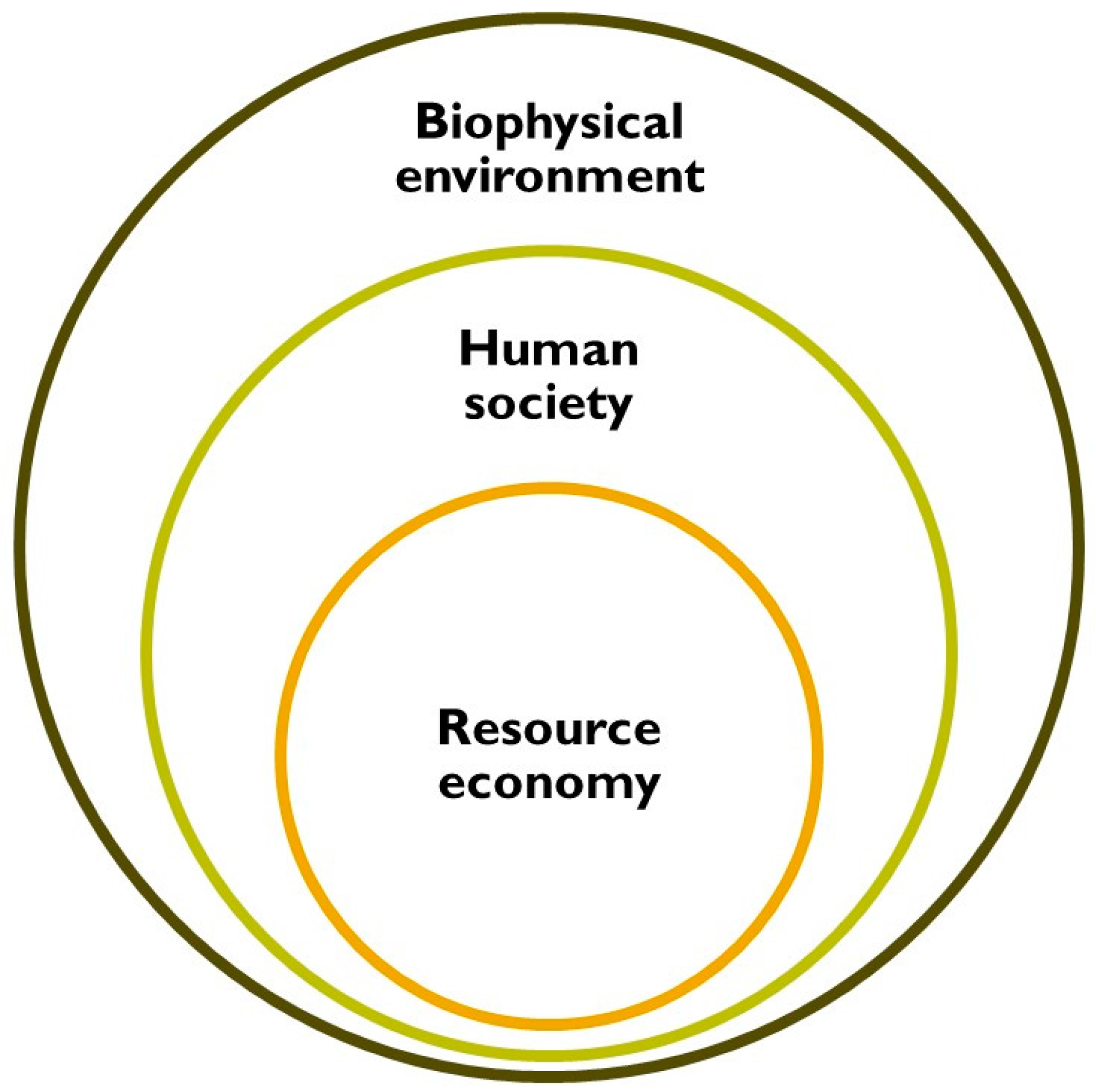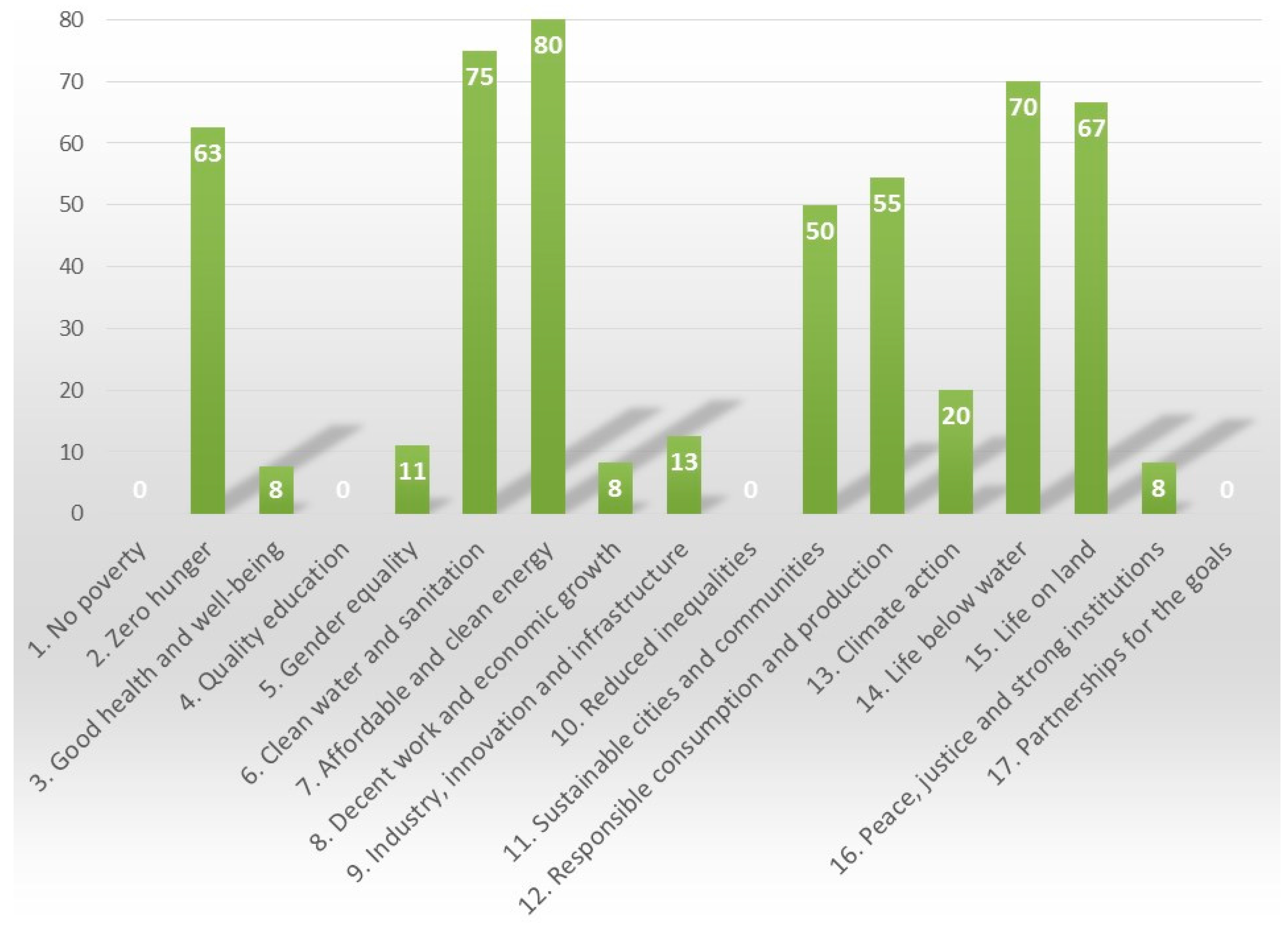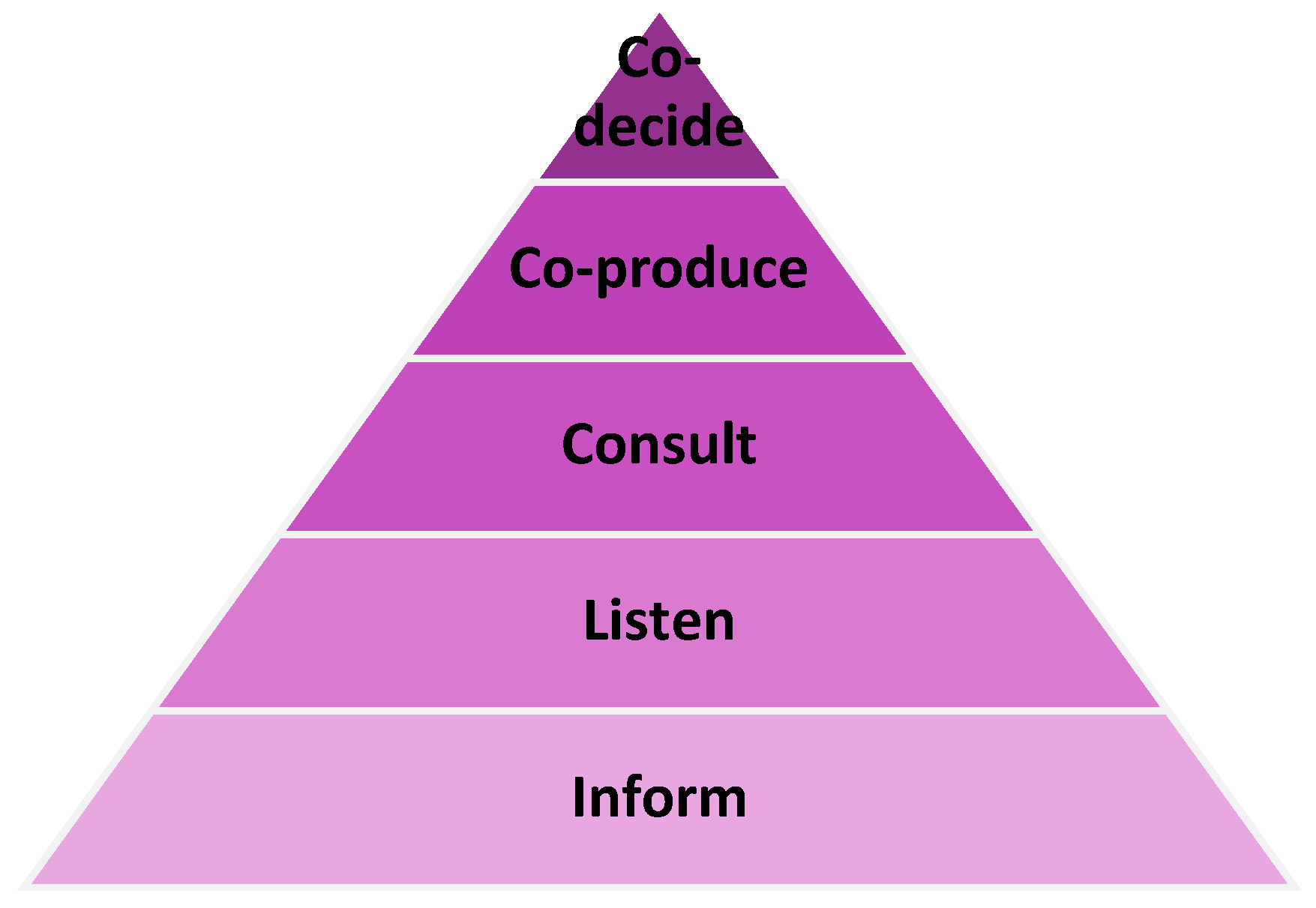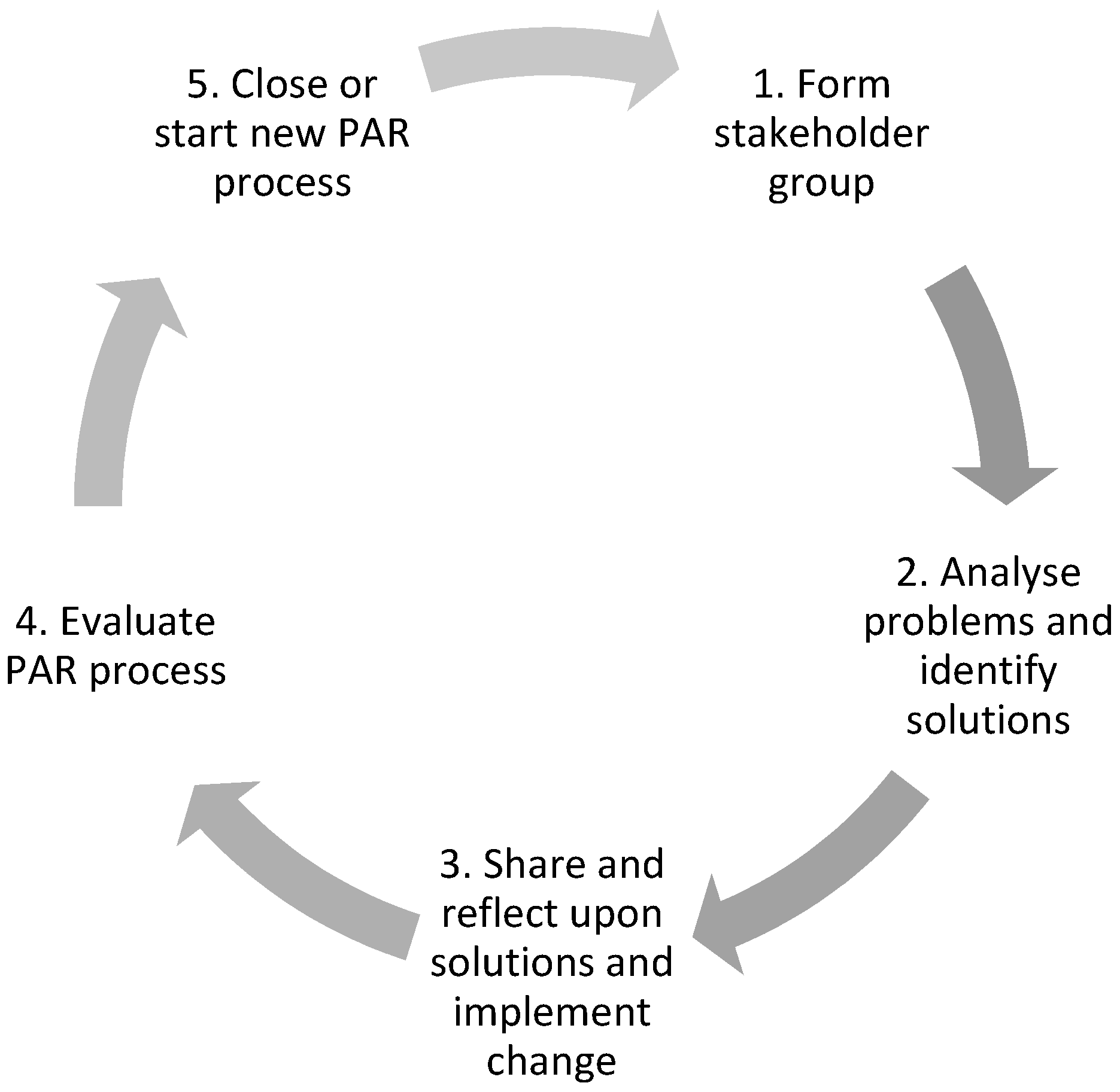Resource Recovery from Waste: Restoring the Balance between Resource Scarcity and Waste Overload
Abstract
:1. Introduction
2. Ecosystem Stewardship and Resource Management
- 6.3: By 2030, improve water quality by reducing pollution, eliminating dumping, and minimizing release of hazardous chemicals and materials, halving the proportion of untreated wastewater and substantially increasing recycling and safe reuse globally.
- 9.4: By 2030, upgrade infrastructure and retrofit industries to make them sustainable, with increased resource-use efficiency and greater adoption of clean and environmentally sound technologies and industrial processes, with all countries taking action in accordance with their respective capabilities.
- 12.1: Implement the 10-Year Framework of Programmes on Sustainable Consumption and Production Patterns, all countries taking action, with developed countries taking the lead, taking into account the development and capabilities of developing countries.
3. Crossing Planetary Boundaries
4. Crossing Social Boundaries of Health and Well-being
‘It has long been recognized that a clean, healthy and functional environment is integral to the enjoyment of human rights, such as the rights to life, health, food, and an adequate standard of living’.([22] p. viii)
- provisioning services including those providing food, water, timber, and fibre;
- supporting services including soil formation, photosynthesis, and nutrient cycling;
- regulating services including managing the climate, floods, disease, wastes, and water quality; and
- cultural services including those with recreational, aesthetic, and spiritual benefits.
5. Economic Models of Waste and Resource Flows
- advances in sciences (economics, environmental, engineering and social) to develop new processing technologies and business models;
- methodologies that can account for emissions to the biosphere and impacts on the environment, human health, and social wellbeing; and
- economic models that can assess the true (i.e., economic, social and environmental) costs and benefits of materials and wastes.
6. Science and Technology
6.1. From End-of-Pipe Approaches to Whole System Design
6.2. Multi-Dimensional Value Assessments for Circular Supply Chains
7. Rebalancing Resource Recovery and Waste Overload
- designers, manufacturers, consumers, and waste processers along the supply chain;
- academia to provide the evidence base, enabling technologies and analytical tools; and
- politicians and regulators to provide legislation that changes behaviours and supports markets, supported by NGOs where governments have failed.
7.1. Participatory Approaches for the Circular Economy
- contribute to greater social inclusiveness and empowerment of stakeholders;
- promote social learning and thereby strengthen connections between diverse societal segments and transform adversarial relations (for example, between proponents of environmental protection and economic growth);
- increase the quality of information and solutions, not least due to embeddedness into specific (geographic) contexts; and
- increase acceptance and commitment to the solutions that can also contribute to prevention of implementation issues and consequently reduce costs when bringing a solution into practice.
7.2. Participation Strategy of the Resource Recovery from Waste Programme
- Stakeholder and network analysis
- Understanding learning and innovation pathways
- Detailing engagement activities
- learning and innovation mechanisms;
- openness to external (compared to in-house generated) knowledge;
- the types of contacts considered reliable and trustworthy when gathering information about changing business practices, business improvements, and innovations; and
- the types and credibility of communication channels used when exchanging information with the identified knowledge providers.
8. Conclusions
Acknowledgments
Author Contributions
Conflicts of Interest
References
- Dobbs, R.; Oppenheim, J.; Thompson, F.; Brinkman, M.; Zornes, M. Resource Revolution: Meeting the World’s Energy, Materials, Food, and Water Needs; McKinsey Quarterly and Company: New York, NY, USA, 2011. [Google Scholar]
- United Nations Environment Programme (UNEP). Decoupling: Natural Resource Use and Environmental Impacts from Economic Growth; Fischer-Kowalski, M., Swilling, M., von Weizs€acker, E.U., Ren, Y., Moriguchi, Y., Crane, W., Krausmann, F., Eisenmenger, N., Giljum, S., Eds.; A Report of the Working Group on Decoupling to the International Resource Panel; UNEP: Nairobi, Kenya, 2011. [Google Scholar]
- Morgan, J. The Great Resource Price Shock; Green Alliance: London, UK, 2014. [Google Scholar]
- United Nations Environment Programme (UNEP); International Solid Waste Association (ISWA). Global Waste Management Outlook. 2015. Available online: http://apps.unep.org/publications/index.php?option=com_pub&task=download&file=011782_en (accessed on 4 July 2016).
- United Nations (UN). Transforming Our World: The 2030 Agenda for Sustainable Development; UN: New York, NY, USA, 2015. [Google Scholar]
- Natural Environment Research Council (NERC). Resource Recovery from Waste Science and Implementation Plan 2012–2018—Version 1.3, Jan 2014; NERC: Swindon, UK, 2014; Available online: http://www.nerc.ac.uk/research/funded/programmes/waste/science-and-implementation-plan/ (accessed on 4 July 2016).
- United Nations Environment Programme (UNEP). Global Material Flows and Resource Productivity: Assessment Report for the UNEP International Resource Panel. 2016. Available online: http://unep.org/documents/irp/16-00169_LW_GlobalMaterialFlowsUNEReport_FINAL_160701.pdf (accessed on 15 August 2016).
- Crutzen, P.J. Geology of mankind: The Anthropocene. Nature 2002, 415, 23. [Google Scholar] [CrossRef] [PubMed]
- Millennium Ecosystem Assessment (MEA). Ecosystems and Human Well-Being: Synthesis; Island Press: Washington, DC, USA, 2005; Available online: http://www.millenniumassessment.org/documents/document.356.aspx.pdf (accessed on 4 July 2016).
- Townsend, C.R.; Begon, M.; Harper, J.L. Essentials of Ecology; Blackwell Publishing: Hoboken, NJ, USA, 2000. [Google Scholar]
- Chapin, F.S.; Kofinas, G.P.; Folke, C. Principles of Ecosystem Stewardship: Resilience-Based Natural Resource Management in a Changing World; Springer: New York, NY, USA, 2009. [Google Scholar]
- Rockström, J.; Steffen, W.; Noone, K.; Persson, Å.; Chapin, F.S., III; Lambin, E.; Lenton, T.; Scheffer, M.; Folke, C.; Schellnhuber, H.J.; et al. Planetary boundaries: Exploring the safe operating space for humanity. Ecol. Soc. 2009, 14, 32. [Google Scholar]
- Steffen, W.; Richardson, K.; Rockström, J.; Cornell, S.E.; Fetzer, I.; Bennett, E.M.; Biggs, R.; Carpenter, S.R.; de Vries, W.; de Wit, C.A.; et al. Planetary boundaries: Guiding human development on a changing planet. Science 2015, 347, 1259855. [Google Scholar] [CrossRef] [PubMed]
- Allwood, J.M.; Cullen, J.M.; Carruth, M.A.; Cooper, D.R.; McBrien, M.; Milford, R.L.; Moynihan, M.C.; Patel, A.C. Sustainable Materials: With Both Eyes Open; Cambridge University Press: Cambridge, UK, 2012; Available online: http://www.withbotheyesopen.com/index.html (accessed on 4 July 2016).
- Natural Environment Research Council (NERC). Sustainable Use of Natural Resources—Theme Action Plan 3; NERC: Swindon, UK, 2012. Available online: http://webarchive.nationalarchives.gov.uk/20120703112514/http:/www.nerc.ac.uk/research/themes/tap/documents/tap-natural-resources-p3.pdf (accessed on 4 July 2016).
- United Nations Environment Programme (UNEP). Waste and Climate Change: Global Trends and Strategy Framework; UNEP: Nairobi, Kenya, 2010; Available online: http://www.unep.or.jp/ietc/Publications/spc/Waste&ClimateChange/Waste&ClimateChange.pdf (accessed on 4 July 2016).
- Gilbert, N. The disappearing nutrient. Nature 2009, 461, 716–718. [Google Scholar] [CrossRef] [PubMed]
- Rowden, J.; Schiller, F.; Penn, A. Redesigning Phosphorous Flows. Soil Requirements on Welfare and Health 44/45:10-12. 2013. Available online: http://www.academia.edu/7270538/Redesigning_phosphorous_flows (accessed on 4 July 2016).
- Mekonnen, M.M.; Hoekstra, A.Y. National Water Footprint Accounts: The Green, Blue and Grey Water Footprint of Production and Consumption; Value of Water Research Report Series No. 50; UNESCO-IHE: Delft, The Netherlands, 2011. [Google Scholar]
- Kartal, B.; Kuenen, J.G.; Van Loosdrecht, M.C.M. Sewage treatment with Anammox. Science 2010, 328, 702–703. [Google Scholar] [CrossRef] [PubMed]
- Le Corre, K.S.; Valsami-Jones, E.; Hobbs, P.; Parsons, S.A. Phosphorus recovery from wastewater by struvite crystallization: A review. Crit. Rev. Environ. Sci. Technol. 2009, 39, 433–477. [Google Scholar] [CrossRef] [Green Version]
- International Panel on Climate Change (IPCC). Climate Change 2014: Impacts, Adaptation, and Vulnerability; Contribution of the Working Group II to the Fifth Assessment Report of the Intergovernmental Panel on Climate Change; Cambridge University Press: Cambridge, UK, 2014. [Google Scholar]
- United Nations Environment Programme (UNEP). Climate Change and Human Rights. 2015. Available online: http://www.unep.org/delc/HumanRightsandTheEnvironment/tabid/54409/Default.aspx (accessed on 4 July 2016).
- Office of the United Nations High Commissioner for Human Rights (OHCHR); United Nations Environment Programme (UNEP). Human Rights and the Environment. 2012. Available online: http://www.unep.org/delc/Portals/119/JointReportOHCHRandUNEPonHumanRightsandtheEnvironment.pdf (accessed on 4 July 2016).
- Raworth, K. A Safe and Just Space for Humanity: Can We Live within the Doughnut? Oxfam International: Oxford, UK, 2012. [Google Scholar]
- 10YFP. The 10 Year Framework of Programmes on Sustainable Consumption and Production; UNEP: Nairobi, Kenya, 2012; Available online: http://www.scpclearinghouse.org/sites/default/files/10yfp_general_brochure_february_2017-.pdf (accessed on 4 July 2016).
- Royal College of Physicians (RCP); Royal College of Paediatrics and Child Health (RCPCH). Every Breath We Take: The Lifelong Impact of Air Pollution; The Lavenham Press: Lavenham, UK, 2016. [Google Scholar]
- International Solid Waste Association (ISWA). A Roadmap for Closing Waste Dumpsites: The World’s Most Polluted Places. 2016. Available online: http://www.iswa.org/fileadmin/galleries/About%20ISWA/ISWA_Roadmap_Report.pdf (accessed on 12 September 2016).
- Wilson, D.C.; Velis, C.; Cheeseman, C. Role of informal sector recycling in waste management in developing countries. Habitat Int. 2006, 30, 797–808. [Google Scholar] [CrossRef]
- Bilitewski, B.; Barbra, R.M.; Barcelo, B. Global Risk Based Management of Chemical Additives I: Production, Usage and Environmental Occurrence; Springer: Berlin, Germany, 2012. [Google Scholar]
- Smith, S.R. Organic contaminants in sewage sludge (biosolids) and their significance for agricultural recycling. Philos. Trans. R. Soc. Lond. A 2009, 367, 4005–4041. [Google Scholar] [CrossRef] [PubMed]
- Slater, F.R.; Singer, A.C.; Turner, S.; Barr, J.J.; Bond, P.L. Pandemic pharmaceutical dosing effects on wastewater treatment. FEMS Microbiol. Lett. 2011, 315, 17–22. [Google Scholar] [CrossRef] [PubMed] [Green Version]
- Department for Environment, Food and Rural Affairs (DEFRA). Guidance on Applying the Waste Hierarchy; DEFRA: York, UK, 2011. Available online: https://www.gov.uk/government/uploads/system/uploads/attachment_data/file/69403/pb13530-waste-hierarchy-guidance.pdf (accessed on 4 July 2016).
- Collier, P.; Alles, C.M. Materials Ecology. Science 2010, 330, 919–920. [Google Scholar] [CrossRef] [PubMed]
- Ghisellini, P.; Cialani, C.; Ulgiati, S. A review on circular economy: The expected transition to a balanced interplay of environmental and economic systems. J. Ind. Ecol. 2016, 114, 11–32. [Google Scholar] [CrossRef]
- WRAP. Waste and Resources Action Partnership, WRAP and the Circular Economy. 2016. Available online: http://www.wrap.org.uk/about-us/about/wrap-and-circular-economy (accessed on 4 July 2016).
- House of Commons. UK Implementation of the Sustainable Development Goals; House of Commons: London, UK, 2016; Available online: https://www.publications.parliament.uk/pa/cm201617/cmselect/cmintdev/103/103.pdf (accessed on 15 August 2016).
- BBC. 2012. Available online: http://www.bbc.co.uk/news/business-17348648 (accessed on 4 July 2016).
- European Union (EU). Critical Raw Materials. 2017. Available online: https://ec.europa.eu/growth/sectors/raw-materials/specific-interest/critical_en (accessed on 12 June 2017).
- Haas, W.; Krausmann, F.; Wiedenhofer, D.; Heinz, M. How circular is the global economy? An assessment of material flows, waste production, and recycling in the European Union and the world in 2005. J. Ind. Ecol. 2015, 19, 765–777. [Google Scholar] [CrossRef]
- Ortegon, K.; Nies, L.F.; Sutherland, J.W. Preparing for end of service life of wind turbines. J. Clean. Prod. 2013, 39, 191–199. [Google Scholar] [CrossRef]
- Topham, E.; McMillan, D. Sustainable decommissioning of an offshore wind farm. Renew. Energy 2017, 102, 470–480. [Google Scholar] [CrossRef]
- Gomes, H.I.; Mayes, W.M.; Rogerson, M.; Stewart, D.I.; Burke, I.T. Alkaline residues and the environment: A review of impacts, management practices and opportunities. J. Clean. Prod. 2016, 112, 3571–3582. [Google Scholar] [CrossRef]
- Sapsford, D.; Cleall, P.; Harbottle, M. In Situ resource recovery from waste repositories: Exploring the potential for mobilization and capture of metals from anthropogenic ores. J. Sustain. Metall. 2017, 3, 375–392. [Google Scholar] [CrossRef]
- HMT. HM Treasury and Infrastructure UK Green Book Supplementary Guidance: Valuing Infrastructure Spend; HM Treasury: London, UK, 2015. Available online: https://www.gov.uk/government/publications/green-book-supplementary-guidance-valuing-infrastructure-spend (accessed on 4 July 2016).
- Purnell, P. On a voyage of recovery: A preliminary review of the UK’s resource recovery from waste infrastructure. Unpublished work.
- Iacovidou, E.; Velis, C.A.; Purnell, P.; Zwirner, O.; Brown, A.; Hahladakis, J.; Millward-Hopkins, J.; Williams, P.T. Metrics for optimising the multi-dimensional value of resources recovered from waste in a circular economy: A critical review. J. Clean. Prod. 2017, 166, 910–938. [Google Scholar] [CrossRef]
- Meadows, D.H.; Meadows, D.L.; Randers, J.; Behrens, W.W. The Limits to Growth; A Report for the Club of Rome’s Project on the Predicament of Mankind; Universe Books: New York, NY, USA, 1972; Available online: http://www.donellameadows.org/wp-content/userfiles/Limits-to-Growth-digital-scan-version.pdf (accessed on 15 August 2016).
- Brundtland, G.H. Report of the World Commission on Environment and Development: Our Common Future. 1987. Available online: http://www.un-documents.net/our-common-future.pdf (accessed on 15 August 2016).
- Accenture. The UN Global Compact-Accenture CEO Study on Sustainability; Accenture: Dublin, Republic of Ireland, 2013; Available online: https://www.unglobalcompact.org/docs/news_events/8.1/UNGC_Accenture_CEO_Study_2013.pdf (accessed on 15 August 2016).
- Everard, M.; Reed, M.S.; Kenter, J.O. The ripple effect: Institutionalising pro-environmental values to shift societal norms and behaviours. Ecosyst. Serv. 2016, 21, 230–240. [Google Scholar] [CrossRef]
- Reed, M.S. Stakeholder participation for environmental management: A literature review. Biol. Conserv. 2008, 141, 2417–2431. [Google Scholar] [CrossRef]
- Arnstein, S.R. A ladder of citizen participation. J. Am. Inst. Plan. 1969, 35, 216–224. [Google Scholar] [CrossRef]
- Breman, B.; Pleijte, M.; Ouboter, S.; Buijs, A. Participatie in Waterbeheer: Een vak Apart; Alterra Wageningen UR: Wageningen, The Netherlands, 2008. [Google Scholar]
- Roldán, A.M. Political regime and learning outcomes of stakeholder participation: Cross-national study of 81 biosphere reserves. Sustainability 2017, 9, 553. [Google Scholar] [CrossRef]
- Richards, C.; Blackstock, K.; Carter, C. Practical Approaches to Participation, 2nd ed.; SERG Policy Brief Number 1; Carter, C.E., Spash, C.L., Eds.; Socio-Economic Research Group: Hilton Head Island, SC, USA, 2007. [Google Scholar]
- Bulkeley, H.; Watson, M.; Hudson, R. Modes of governing municipal waste. Environ. Plan. A 2007, 11, 2733–2753. [Google Scholar] [CrossRef]
- Lehtoranta, S.; Nissinen, A.; Mattila, T.; Melanen, M. Industrial symbiosis and the policy instruments of sustainable consumption and production. J. Clean. Prod. 2011, 19, 1865–1875. [Google Scholar] [CrossRef]
- Koskela, S.; Matilla, T.; Antikainen, R.; Mäenpää, I. Identifying Key Sectors and Measures for a Transition towards a Low Resource Economy. Resources 2013, 2, 151–166. [Google Scholar] [CrossRef]
- Velenturf, A.P.M.; Jensen, P.D. Promoting industrial symbiosis: Using the concept of proximity to explore social network development. J. Ind. Ecol. 2016, 20, 700–709. [Google Scholar] [CrossRef] [Green Version]
- Bacon, C.; Mendez, V.E.; Brown, M. Participatory Action Research and Support for Community Development and Conservation: Examples from Shade Coffee Landscapes in Nicaragua and El Salvador; Center Research Brief #6; Center for Agroecology and Sustainable Food Systems, University of California: Santa Cruz, CA, USA, 2005. [Google Scholar]
- Defoer, T.; De Groote, H.; Hilhorst, T.; Kante, S.; Budelman, A. Participatory action research and quantitative analysis for nutrient management in southern Mali: A fruitful marriage? Agric. Ecosyst. Environ. 1998, 71, 215–228. [Google Scholar] [CrossRef]
- Reed, M.S.; Graves, A.; Dandy, N.; Posthumus, H.; Hubacek, K.; Morris, J.; Prell, C.; Quinn, C.H.; Stringer, L.C. Who’s in and why? A typology of stakeholder analysis methods for natural resource management. J. Environ. Manag. 2009, 90, 1933–1949. [Google Scholar] [CrossRef] [PubMed]
- Boschma, R. Proximity and innovation: A critical assessment. Reg. Stud. 2005, 39, 61–74. [Google Scholar] [CrossRef]
- Velenturf, A. P. M.; Iacovidou, E. Learning and Innovating in Waste Management. Resource Recovery from Waste. 2016. Available online: https://www.linkedin.com/pulse/learning-innovating-waste-management-recovery-from-waste-programme (accessed on 26 September 2016).
- Resource Recovery from Waste. 2017. Available online: https://www.linkedin.com/pulse/towards-shared-vision-waste-resource-management-1-resource (accessed on 23 January 2017).
- Velenturf, A.P.M.; Purnell, V.P.; O’Callaghan, K.; Tregent, M.; Ferguson, J.; Woodend, A.; Davies, L.; Geveke, A.; McGregor, L.; Jamieson, H.; et al. Co-producing a vision and approach for the transition towards a circular economy: Perspectives from government partners. In Proceedings of the International Sustainable Development and Research Society Conference, Bogota, Colombia, 14–16 June 2017; Available online: http://programme.exordo.com/isdrs2017/delegates/presentation/379/ (accessed on 14 June 2017).



| Planetary Boundary | Relation to Waste and Resource Management |
|---|---|
| Climate change | Mainly driven by use of fossil fuels and land use changes such as deforestation; reflected in CO2 concentration, increased number of heatwaves and heavy rainfall events, droughts, and polar ice mass loss [13]. |
| Ozone depletion | Caused by a combination of anthropogenic ozone-depleting substances such as CFCs and nitric acid. |
| Ocean acidification | Carbon dioxide emissions from fossil fuel use leads to ocean acidification by dissolving in sea water as well as carbon uptake by marine organisms. |
| Biogeochemical loading | Atmospheric N2 is converted into biologically active forms through industrial ammonia production, crop production, and burning of fossil-fuels and biomass. Most N2 intended for crop fertilisers dissipates into the (aquatic) environment where it causes pollution. While P dissipates into the environment through natural processes, the human use of detergents and sewage effluent flows adds to P loading in the (aquatic) environment. |
| Land system change | Land conversion to crop land and agricultural intensification. Controllable by only using most productive areas for crops, limiting land degradation, maintaining irrigation water flows, and managing competing land-uses including urbanisation and biofuel production as well as managing consumption patterns and waste generation. |
| Rate of biodiversity loss (biosphere integrity [13]) | Including genetic and functional diversity [13]. Humanity accelerated biodiversity loss by 100–1000 times Earth’s historic extinction rates. Species loss is driven by habitat loss and degradation, overexploitation, species introductions, climate change, and pollution. |
| Global freshwater use | Temporal and spatial flows of freshwater are mainly controlled by people, affecting other resource flows such as access to food and precipitation patterns. |
| Atmospheric aerosol loading | Global concentrations of aerosols have doubled due to human activity in the past 250 years, impacting precipitation patterns and human health (especially respiratory diseases). Aerosol loading can also impact agricultural productivity, forest cover, and freshwater fish. |
| Chemical pollution | This includes pollution through heavy metals, organic compounds of human origin, and radioactive compounds, impacting human health and the physiology of other life. Exposure can be direct through air, water, and soil but also through accumulation in food chains. Effects are not necessarily directly lethal but can disrupt endocrine systems etc. For some chemicals, planetary boundaries have been crossed (e.g., POPs such as dioxins and DDT); however, determining whether the overall planetary boundary has been crossed is not possible yet due to the large range and complexity of chemicals produced by humanity. |
| Right to: | Relation to Environment and Waste and Resource Management |
|---|---|
| Life | Depending on access to other fundamental rights to food, water, health and shelter. Personal safety and security from natural and man-made disasters (linked to e.g., climate change and changing water flows). |
| Water | Water and sanitation are recognised as fundamental to physical and mental health and the right to life, disease prevention, and living a life in dignity. |
| Food | Food production depends on environmental quality such as climate, soil, water and biodiversity. |
| Health | Related to changes in land use, migration, and environmental degradation giving space for spreading of diseases. Linked in particular to access to clean air and water. |
© 2017 by the authors. Licensee MDPI, Basel, Switzerland. This article is an open access article distributed under the terms and conditions of the Creative Commons Attribution (CC BY) license (http://creativecommons.org/licenses/by/4.0/).
Share and Cite
Velenturf, A.P.M.; Purnell, P. Resource Recovery from Waste: Restoring the Balance between Resource Scarcity and Waste Overload. Sustainability 2017, 9, 1603. https://doi.org/10.3390/su9091603
Velenturf APM, Purnell P. Resource Recovery from Waste: Restoring the Balance between Resource Scarcity and Waste Overload. Sustainability. 2017; 9(9):1603. https://doi.org/10.3390/su9091603
Chicago/Turabian StyleVelenturf, Anne P. M., and Phil Purnell. 2017. "Resource Recovery from Waste: Restoring the Balance between Resource Scarcity and Waste Overload" Sustainability 9, no. 9: 1603. https://doi.org/10.3390/su9091603
APA StyleVelenturf, A. P. M., & Purnell, P. (2017). Resource Recovery from Waste: Restoring the Balance between Resource Scarcity and Waste Overload. Sustainability, 9(9), 1603. https://doi.org/10.3390/su9091603







